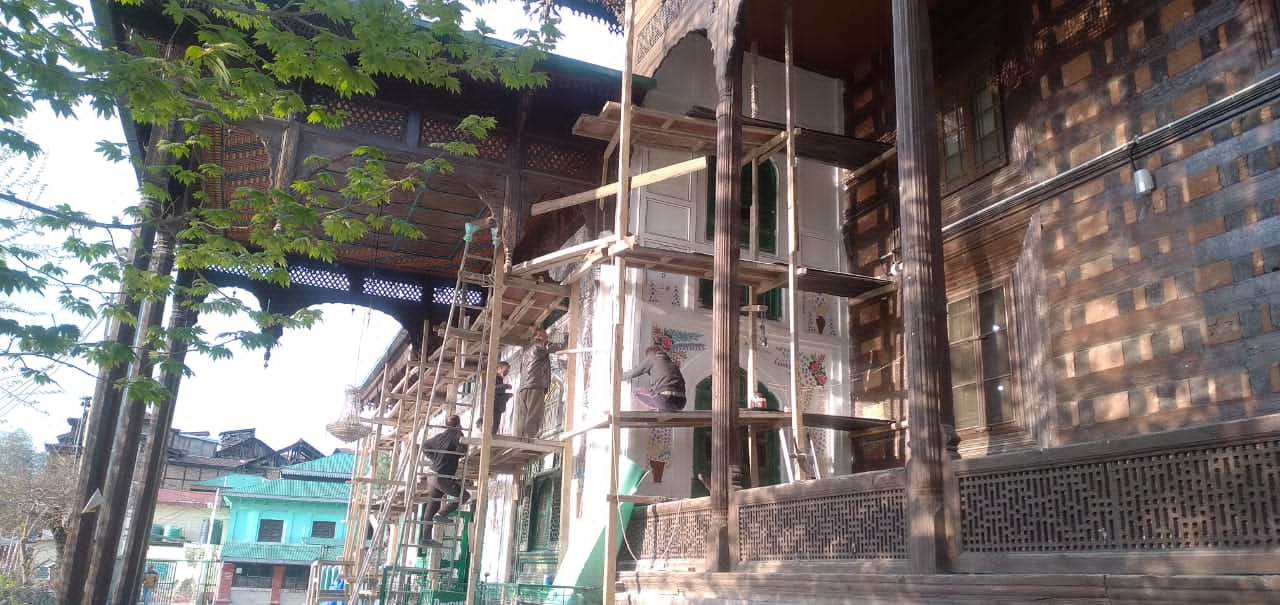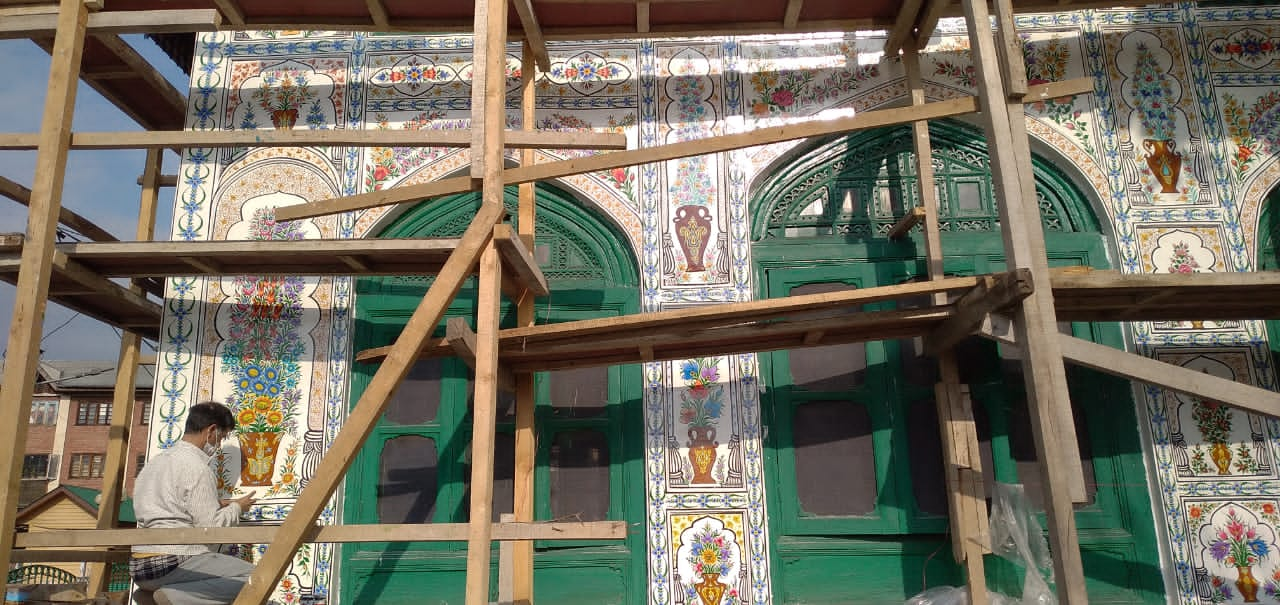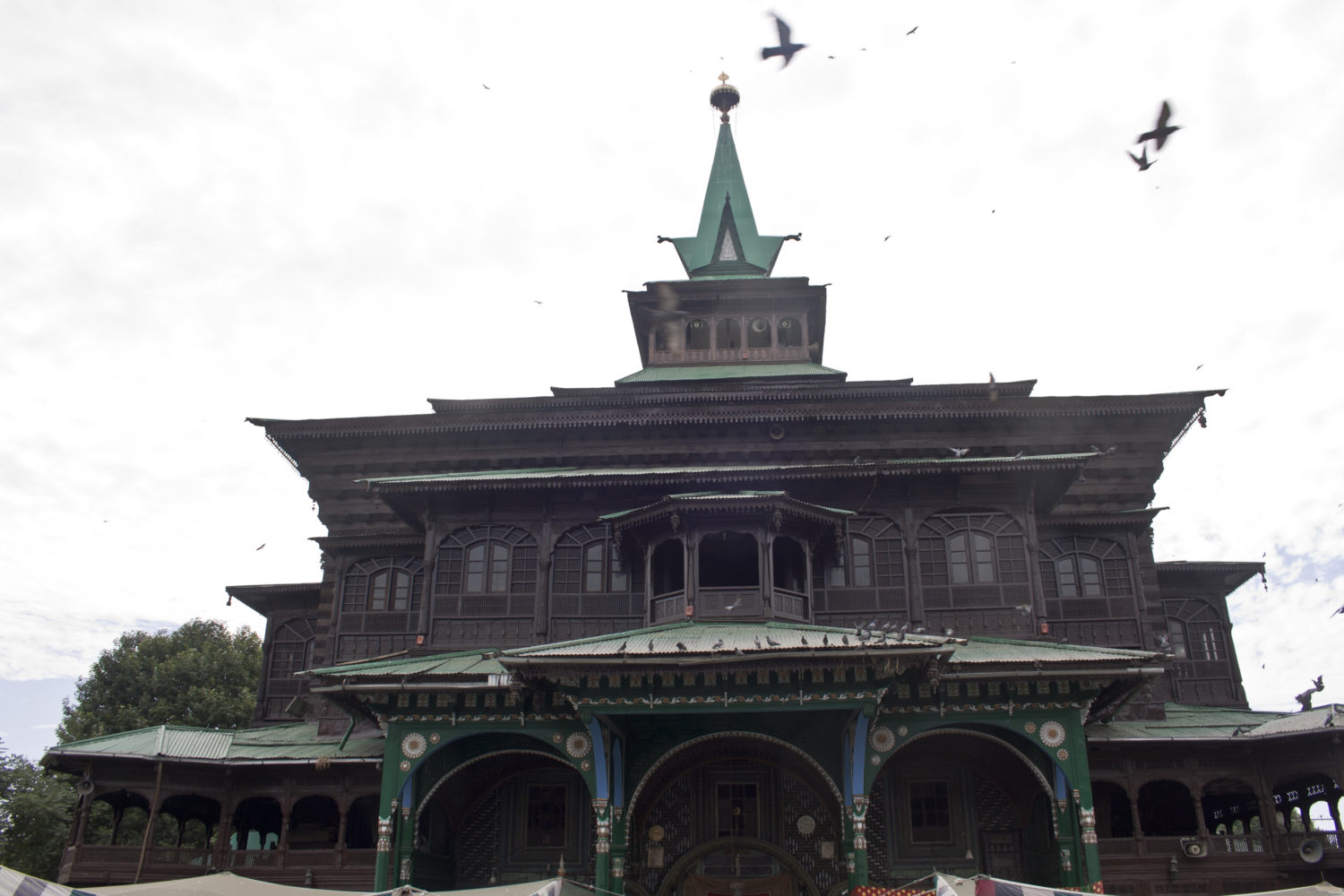A viral picture showing blatant bureaucratic toying with the heritage shrine lately created an outcry in the ‘valley of saints’. A fortnight later, as the debate is lost in the deafening din of the resurgent Covid, Kashmiri sanctums await cultural redressal and a rescue plan.
The grouse is growing, so is the sense of artistic anguish.
The old city’s art patrons call it an institutional failure despite sanctums being “cash cows” for caretakers and custodians for centuries.
Be it dusty edifice of Dastgeer Sahab or Khanqah-e-Moula’s disfigured wall, the question that everybody is asking: Who’s undoing Kashmir’s rich sanctum aesthetics?
“These shrine custodians should learn a lesson or two from Gurudwara management committee,” says Afaaq Bhat, a travel agent from downtown.
“They don’t only keep premises of their sacred spaces clean, but also take great care of the aesthetics of their devotional places.”
Many claim the current state of affairs make sanctums of vale a mainstay of mendicants and messy managers.
“You can’t throw these places open for mendicants and then decry over the lost aura and ambiance of the place,” Bhat says.
“People at the helm of affairs should be mindful of the spiritual and societal significance of these heritage structures.”
This sanctum discourse is stemming from the recent disfiguring attempts of Shahi-e-Hamdan’s Jhelum signpost.
As the visuals went viral and created a public outcry online, the work was stopped — not before making many wonder: why do these shrine custodians wait for a heritage site to become a ramshackle structure before starting a “mindless” restoration?

But as most of these questions remain unanswered, a careful walk to Khanqah-e-Moula amid pandemic restrictions reveals the same old signature picture.
Beyond the regulated gates, the view of shrine is serene, with pigeons fluttering and eating grains on stone stage once shielded by a big artistic rafter.
But now, in the bare and bereft picture of the place, some lofty-seated caretakers are either yawning or customarily collecting votive sum.
Recently, right under their noses, the heritage mural-painted walls of the shrine were obliterated and renovated with Plaster of Paris (POP).
Apart from the wall murals, attempts were made to fill up the iconic arches with new and ugly windows.
“Sanctum management is a regular job, rather than a long overdue work to cover up the deepset rot,” says Yaseem Mirza, a local trader.
“This place is frequented by many foreign sightseers for research. It needs constant updating. But it’s really sad to see how these shrine custodians are making it a haven of pestering mendicants and grubby ambiance for the visitors.”

It was in March this year that the J&K Tourism Department started renovation work in the shrine after getting nod from the Waqaf board — the public donation-driven custodian body of shrines in the valley.
And soon, among others, artist Ali Mohammad Dangroo was employed to paint wall murals.
“We’ve not changed anything here,” Dangroo says, hesitatingly showing the pictures of the walls taken before renovation. “The design is the same as it existed before renovation.”
Over the years, the shrine walls exposed to sun, shower and snow, had turned yellowish and the murals had chipped at many places, a shrine caretaker says.
“It was then the shrine authority decided to renovate the walls but they were unable to find the mirror work artists and material in Kashmir.”
In 2000, he says, the walls were renovated in the similar manner. “The new design is the same as it existed before 90s.”

But experts say the administration cannot plaster the walls and paint new murals on them, without consulting experts and explore the option for preserving the heritage murals.
“We started renovation work after consulting the cultural department and local Waqaf Board,” Ghulam Nabi Itoo, Director Tourism, says.
“Wall murals have been painted after the proper consultation and there is no issue with it.”
But the mural whitewashing is only drawing ire for the tourism department “for failing to preserve” the century old heritage art at Khanqah-e-Moula.
“There are many techniques available for preservation of heritage art but the government hasn’t given it a thought but simply washed off the whole wall and painted a new mural,” says Hakim Sameer Hamdani, a prominent Architecture and Design Director INTACH.
“And even if they’ve painted the walls with the same designs, they cannot claim it preservation of heritage art. It’s simply undoing the heritage.”
Free Press Kashmir is now on Telegram. Click here to Join.
FPK Android App for 2G. Click here to Download.








